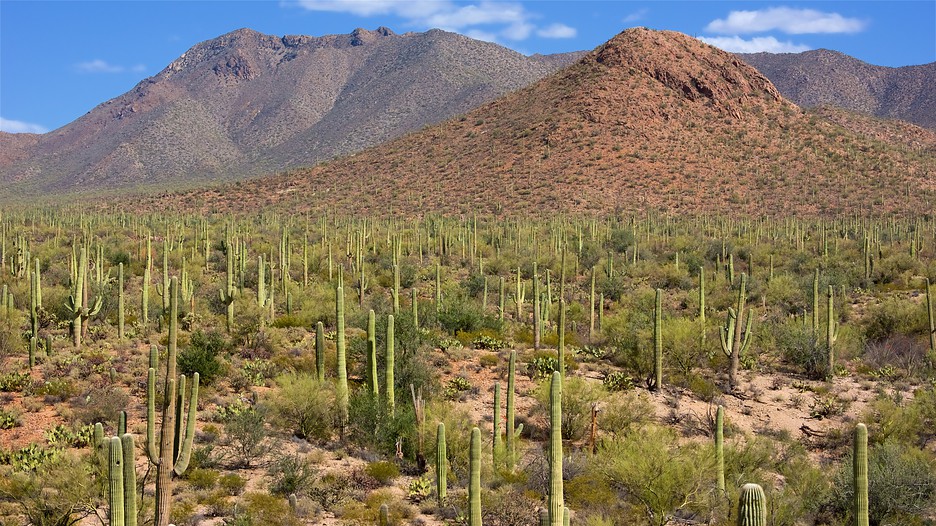
Nature sets the cadence here, with a wide spectrum of intense weather phenomena. In addition to the southern Arizona heat, summer brings torrential monsoons and electrical storms accompanied by breathtaking 360-degree sunset light shows. In the winter it’s windy, big sky, balmy days, and near-freezing nights. We get a break in spring and autumn with warm days and idyllic nights perfect for projects, community gatherings, drum circles, and star gazing.

Flora and fauna also challenge and amaze us at every turn. We walk the land barefoot with great care to avoid the unforgiving cholla (aka jumping cactus) thorns, and the sea of fingernail-sized baby toads hopping everywhere. We experience gratitude and awe while acknowledging the need for a safe distance with each rare sighting of the slow and elusive Gila monster, an endangered and venomous native lizard that can grow up to 22 inches long. We marvel at the night-blooming cereus and the 100+-year-old, 20-foot-tall saguaro cactus centered in our sacred ceremony space. We find amusement in the antics of the coyotes and roadrunners, at the same time as we confront the wily desert pack rats that invade any unfortified space. Pack rats slice through electrical wiring like professional car thieves and drag in piles of cholla glochids (bundles of nasty, barbed spines) to protect their nests. While we remain committed to nature preservation, we are also willing to growl and bare our teeth regarding these adorable bully varmints.
We are blessed to be surrounded on two sides by state land, and the other two sides by a series of community-minded mini-communities like ours. However, just as nature challenges us, so do our fellow humans. Off-land thieves have necessitated that we divert valuable resources to secure our quarter-mile parcel of land. While the new cameras, sensors, and automatic gates provide us a measure of peace of mind, the daily false alarms are a constant reminder that we cannot yet live our lives as carefree as we would like. Likewise, though we are grateful that our neighbors are significantly more aligned with our ideology than the larger “default world,” there are still stark differences that occasionally test us. Because our neighbors are more community-minded we get to/have to interact with them regularly. This has allowed us the opportunity to be more diplomatic at times, while also learning to set healthy boundaries. The fact that we regularly communicate is refreshing in a world dominated by automatic garage doors where one often does not even set eyes on their neighbors. One silver lining that has already materialized due to information provided by our neighborhood connections is the retrieval of an expensive trailer that had been stolen.
In addition to these external challenges, there are no shortages of internal challenges to be overcome. Key to our vision for community is the notion that our far ancestors, due to necessity, lived in a closely connected and interdependent fashion. Before “civilization” with its systems of power concentration, command, and control, nature and survival mandated that we work together effectively as a tribe. To set the stage for our “un-gridding” return to nature we are designing our community to support this vision. One example of this is that our private living spaces will be comfortable but small, necessitating that we gather to eat, sing, dance, and play in common areas. We don’t include the words “work” or “labor” in our list of activities since we hope to deprecate those words which we see as relics of the patriarchy. Instead, we aim to use terms like contribution and support of community, or work-play to describe the activities that we happily do in support of the tribe.

To further counter the deep generational cultural programming and selection process that humans have endured for millennia, we are raising our flag in alignment with the Inclusive Feminist movement. We see this movement as a strong, viable, and relevant force that aligns well with our mission and vision. When it comes to the creation of “rules” for community we are inspired by works such as the “Co-Creator’s Agreements” and the 11 Burner Principles (from Burning Man culture). However, these documents do not directly address specific challenges that come up repeatedly. Our first rule has been “We resist creating a bunch of rules” and so as it happens we have only recently created our second rule. For some, it comes as a surprise, and for others not at all, that our second codified edict pertains to alcohol. Of all human ailments, this one has reared its ugly head first and repeatedly, so we have chosen to align ourselves with the Feminist Suffragettes of the past and we have declared our little piece of potential bliss to be alcohol-free. This is a heady subject that would necessitate its own article, but suffice it to say that the “spirit” that comes with alcohol is not something that we feel our budding community can or needs to contend with. One practical reason supporting our first rule is that these types of community decisions need to be fully vetted and thought out by a “community council.” Our full council is still assembling and as we form we are inspired by the book The Fifth Sacred Thing by Starhawk. This novel depicts the workings of a highfunctioning, mature council system as well as an ethos of accountability and personal freedom that we find compelling.
